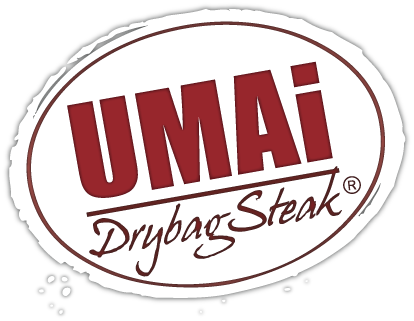 Dry aged beef has been around for, well, ages. It was the norm to hang beef carcasses in lockers for a few weeks after slaughter to become more tender and flavorful.
Dry aged beef has been around for, well, ages. It was the norm to hang beef carcasses in lockers for a few weeks after slaughter to become more tender and flavorful.
Benefits of Dry Aging
– The meat’s natural enzymes break down the fibrous, connective tissue in the muscle thereby tenderizing it.
– Dry aging beef will give the meat a rich oaky flavor. Beef can be “wet aged” in a vacuum-sealed bag in its own juices for improved tenderness, but it will be missing the characteristic dry aged depth of flavor and rich texture.
While traditional ‘dry world’ aging practices have a positive impact on flavor and tenderness, today they require specialized facilities to maintain modern requirements for food safety and consistent quality.
The main factors affecting quality of dry aging are days of aging, storage temperature, relative humidity and airflow, according to an executive summary on dry-aging of beef from Jeff W. Savell, Ph.D, a Regents professor and E.M. “Manny” Rosenthal Chairholder at Texas A&M University.
Days of Aging
While the recommended days of aging can range from 14 to 35 days, Savell writes, “…There does not seem to be a magical threshold where sufficient time is required beyond about 14 days to truly call this beef “dry aged” from a performance standpoint.” He goes on to say that dry aging enthusiasts usually have their own set schedule they like for a certain flavor. This is one factor that a chef can alter based on personal preferences.
Storage Temperature
The temperature of the refrigerator is important because temperatures too cold can stop the enzymes from properly breaking down the tissues and the meat will not tenderize, while temperatures too warm can promote pathogen growth, spoilage, or off-odors and flavors, Savell says. Ideal temperatures are between 34 and 38 degrees Fahrenheit.
While relative humidity is an essential factor in a successful dry-aging process it can be difficult to control. When using UMAi Drybag Steak, within the first few days of aging, the proteins coating the surface of the beef and the DrybagSteak material will unite forming a perfectly transparent shield that both protects your beautifully aging steak and enables it to release moisture in the surrounding environment.
Airflow
Ensure that the meat is placed on an open wire rack so that it has excellent air flow 360 degrees around the surface. You cannot successfully dry age without both proper refrigeration and consistent, complete surface flow of air.
Read more about dry aging beef on our website.

